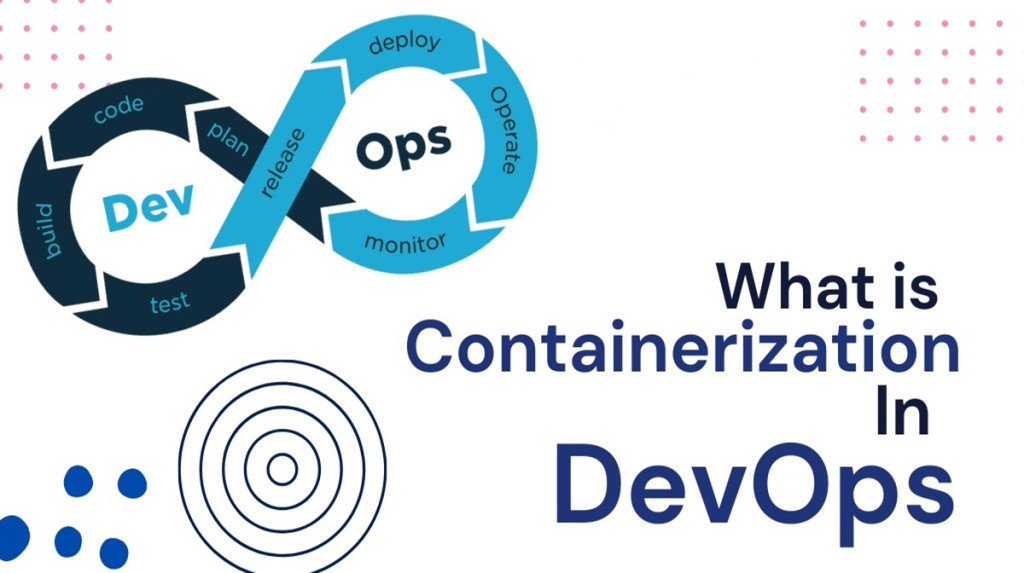Containerization and DevOps are just two of the many elements that make modern software development successful. In the development process, DevOps encourages collaboration and automation, while containerization offers scalability and lightness in development and deployment. A fusion of continuous integration and continuous deployment (CI/CD), which heightens software delivery speed and reliability, is also key.

Familiar with containerization, are you?
Delivering software applications in lightweight containers is a great way to easily deploy them to users. Containers offer several benefits that differentiate them from traditional virtual machines, including the elimination of complex configurations and dependencies during deployment and execution. Essentially, utilizing containers for your application needs makes life much easier. Using a container has numerous advantages. It takes up less room, starts up quicker, and is more resource-efficient than a typical process. By adopting a stable runtime environment, deploying and maintaining apps across various settings becomes more manageable and efficient.
The Docker containerization platform offers an easy-to-use interface for building, distributing, and running containers. In addition to Kubernetes and Docker Swarm, there are other platforms for managing containers at scale.
How does DevOps work?
A DevOps approach combines software development and IT operations to improve speed and reliability. During the development process, software development teams and operations teams should cooperate closely. Through this process, traditional silos can be broken down between these teams, promoting a culture of continuous improvement and learning.
Continuous integration (CI), continuous delivery (CD), and infrastructure as code (IAC) are three DevOps practices and tools. When a code change is committed to a shared repository, it is automatically built and tested. During deployment to production environments, these changes are automated with CD. By managing infrastructure as code with tools like Terraform and Ansible, IAC helps simplify IT.
CI/CD with Containerization
CI/CD, which is an automated process, is used to build, test, and deploy code changes. Containerization combines CI/CD with scalability, portability, and reliability to create powerful software development platforms.
Building, testing, and deploying code changes are automated by CI/CD pipelines, which provide standardized practices and tools. The CI/CD pipeline compiles, tests, and packages the code into deployable artifacts after changes are made to a code repository.
Containerization provides lightweight, portable runtime environments for artifacts, such as Docker images. It is easy to distribute and deploy these images to production environments, ensuring consistency and reliability on different platforms.
With containerization, CI/CD pipelines usually involve the following steps:
- Git is a version control system that developers use to commit code changes.
- The code changes are automatically built and tested using CI servers such as Jenkins, creating Docker images that contain the application and its dependencies.
- Docker Hub or Amazon ECR are two container image repositories where the Docker image is stored.
- The new Docker image is deployed to a staging environment by a CD server such as Kubernetes or Docker Swarm.
- To ensure that the application runs as expected, automated tests are run in the staging environment in order to make sure that it meets the requirements.
- When the CD server determines that the tests passed, the Docker image will be deployed to the production environment once it has passed the tests.
It has been shown that containers can be used in CI/CD pipelines in a number of ways, including:
- Containers are lightweight and portable, making it simple for them to be distributed and deployed across a variety of environments due to their portability.
- It is important to mention that containerization provides a consistent runtime environment, which ensures that the application behaves the same way regardless of the platform that it is running on.
- It is easy to scale up or down containers as demand changes as a result of changes in the market.
- There are several advantages of using containers over virtual machines, including their greater resource efficiency, which helps organizations reduce their infrastructure costs as a result.
As a whole, containerization as well as continuous integration and continuous delivery pipelines provide powerful platforms for software development that are scalable, portable, and reliable. In order to deliver value to their customers, development teams are able to automate the process of building, testing, and deploying code changes by leveraging containerization technology, which minimizes the risk of errors and downtime, allowing them to focus on providing value to their customers.
Final thoughts
It is now widely recognized that containerization and DevOps are among the most important components of modern software development. In fact, combining these two technologies is an effective way for organizations to achieve faster and more reliable software delivery by providing a powerful platform for continuous integration and deployment. With containerization, development teams can focus their efforts on delivering value to their customers by automating the build, test, and deployment processes, while minimizing the risk of errors and downtime that may occur during those processes. Education Nest
